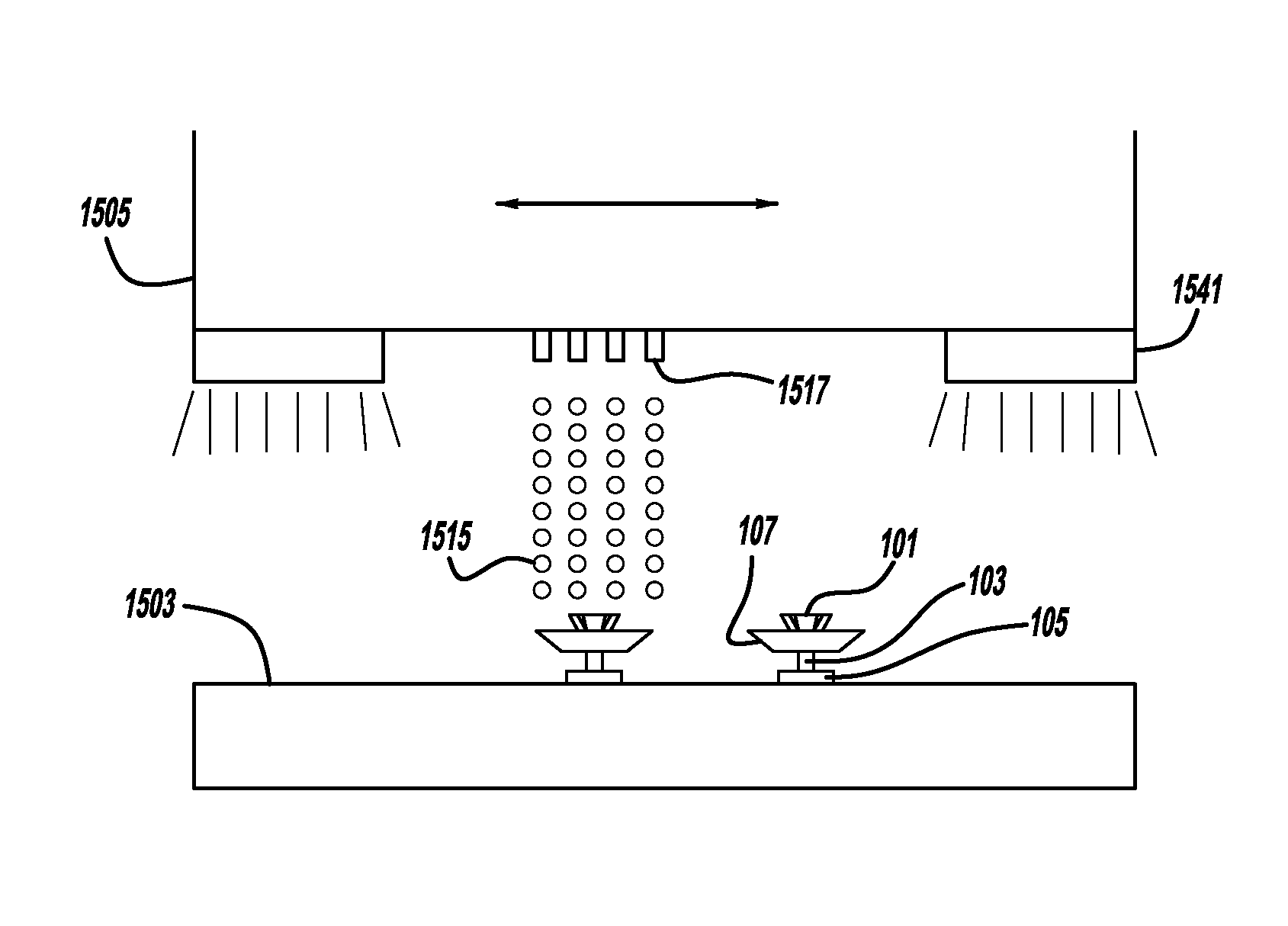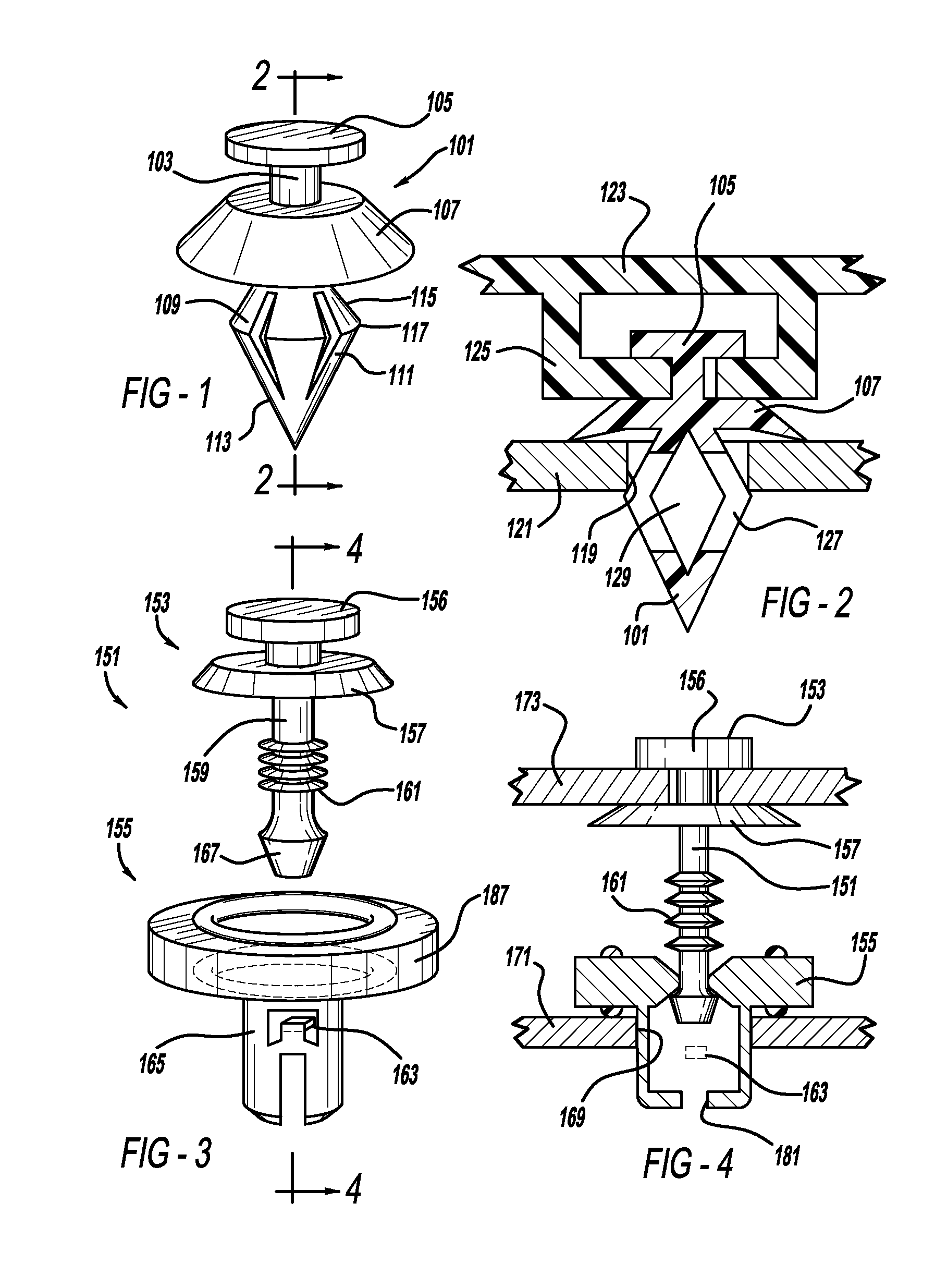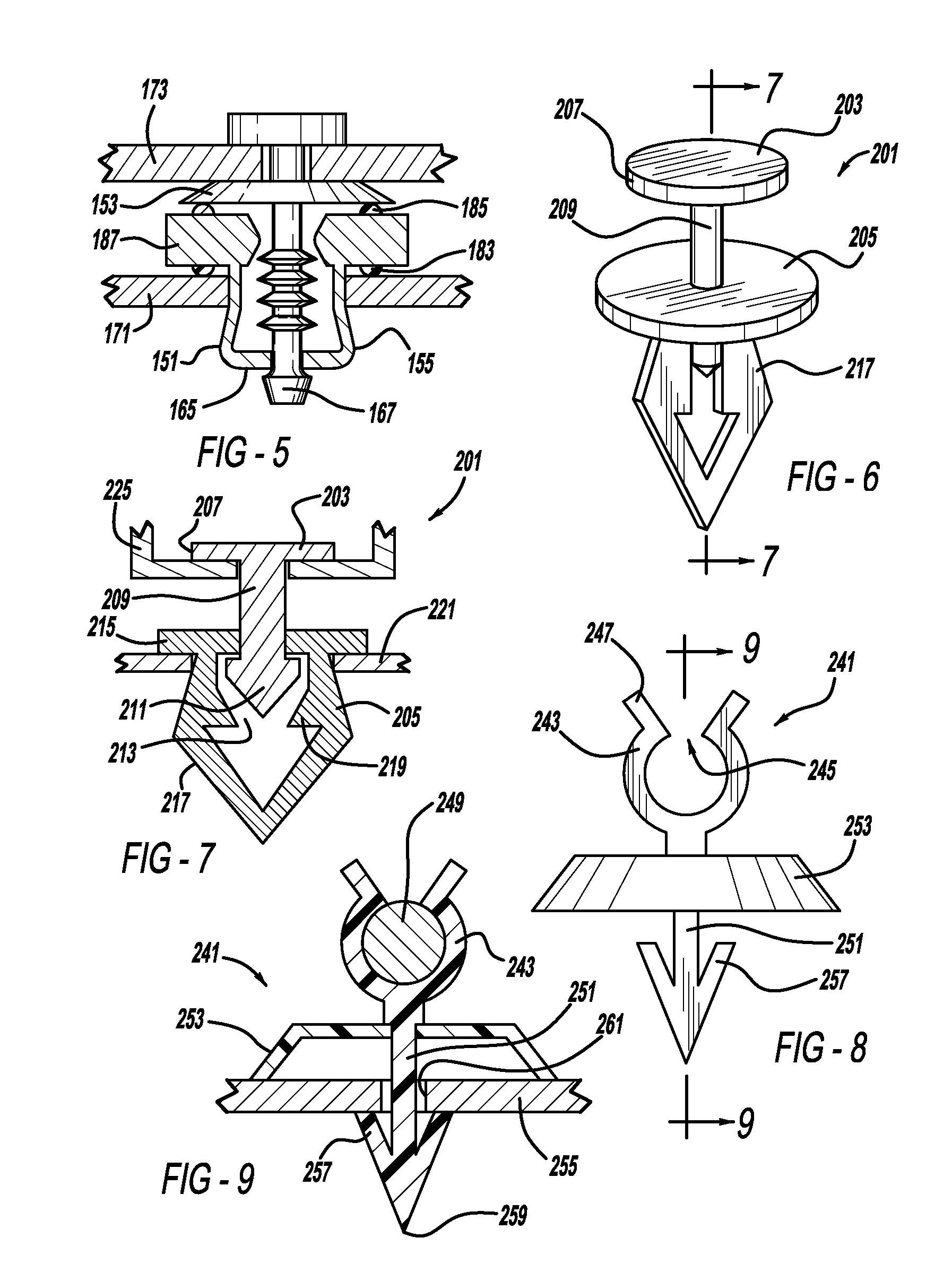Method of making fasteners by three-dimensional printing
a three-dimensional printing and fastener technology, applied in the field of fasteners, can solve the problems of high cost of machined steel dies, inability to manufacture parts, inconvenient design, etc., and achieve the effects of saving hundreds of thousands of dollars and many weeks of die manufacturing time, quick and inexpensive design, and increasing manufacturing speed
- Summary
- Abstract
- Description
- Claims
- Application Information
AI Technical Summary
Benefits of technology
Problems solved by technology
Method used
Image
Examples
Embodiment Construction
[0096]Referring to FIGS. 1 and 2, a fastener 101 includes an elongated body or shaft 103, a laterally enlarged head flange 105, a laterally enlarged umbrella flange 107 and a workpiece-engaging member 109. Workpiece-engaging member 109 further includes at least two, and more preferably at least four barb-like legs 111 which each have a relatively gently angled and tapered lead-in section 113 and a more abruptly angled retention section 115 intersecting at a peak 117. These leg angles provide relatively easy insertion into a hole 119 of a sheet metal panel workpiece 121, and more difficult extraction of the legs therefrom after complete fastening.
[0097]An interior trim panel workpiece 123 is attached to fastener 101 between flanges 105 and 107 by a localized dog house 125. Umbrella flange 107 has flexible frusto-conical edges which are compressible to seal around hole 119 to deter a fluid, such as water or air, from passing therethrough. Longitudinally elongated slots 127 are located...
PUM
| Property | Measurement | Unit |
|---|---|---|
| flexible | aaaaa | aaaaa |
| pressure | aaaaa | aaaaa |
| volume | aaaaa | aaaaa |
Abstract
Description
Claims
Application Information
 Login to View More
Login to View More - R&D
- Intellectual Property
- Life Sciences
- Materials
- Tech Scout
- Unparalleled Data Quality
- Higher Quality Content
- 60% Fewer Hallucinations
Browse by: Latest US Patents, China's latest patents, Technical Efficacy Thesaurus, Application Domain, Technology Topic, Popular Technical Reports.
© 2025 PatSnap. All rights reserved.Legal|Privacy policy|Modern Slavery Act Transparency Statement|Sitemap|About US| Contact US: help@patsnap.com



